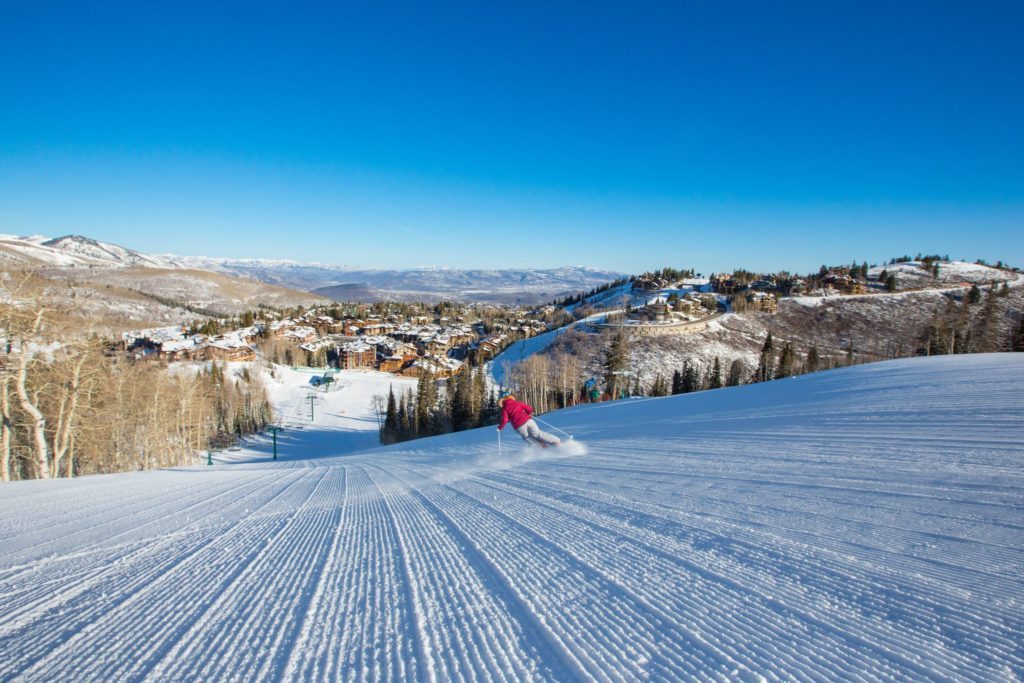The Skier-Car Comparison
Like automobiles, skiers are objects in motion as soon as they are launched on snow. If you accept that premise and look strictly at the bio-mechanical features of both, you might be interested in discovering how they compare.
The engine might be the first element that comes to mind. We all know what’s under the hood of our automobiles: a device either powered by gas, diesel, electrical batteries or a mixture of both known as “hybrid.” A skier’s power-plant is a hybrid as well, as it combines two power sources. The main one is gravity. In alpine skiing the chairlift or the gondola takes skiers up the mountain and “charges” them with enough potential energy to let them ski down the hill. In theory, if these skiers just remained totally still and perfectly balanced on their skis, they might get down by doing strictly nothing. Gravity would bring them down to the bottom of the hill.

But that is just theory, because in reality, skiers must produce a variety of physical efforts if they are to control their speed, steer their skis into turns, fight gravitational forces or absorb changes in terrain. In most cases, the natural work of gravity will have to be supplemented by some muscular assistance from the skier. This reliance on dual power is what make a skier’s engine a hybrid as it combines gravity and muscular strength. An expert skier will ski down “Success” using mostly gravity, but will negotiate trees and bumps on “Centennial Trees” by relying mostly on muscular power and very little gravity. So much for the engine comparison!

This bring us to the ski boots, the next component that transfers energy between a skier and their skis. They (and their binding interface) are the equivalent of a car transmission as they must pass the skier’s power precisely and efficiently to the skis. Conversely, the boots also transmit forces from the terrain onto the skier. This critical link is precisely where most bodily efforts from the skier and reactions from the slope meet, and the more accurate and painless that transfer is, the most effective a skier will be.

Even though they’re the most glorified pieces of equipment, are decked out to get most of the attention on a ski-shop rack and on the hill, skis might be equated to the wheels and more precisely, the tires of an automobile. By the same token, it’s quite ironic that in spite of their key role, car tires get so little attention! Skis are in direct contact with the snow, so they must grip when needed, glide when speed is required, help control the speed at all times, and perform consistently for the longest possible period of time. Most importantly, they also share a dual and opposite role in being the skier’s brakes and accelerator!

That’s it: Speed control; let’s talk about that. On skis, it’s not simply a pair of pedals sitting next to each other, it’s a complete tool-box. If we look at the skier’s gas pedal, it is set in motion when the skis are parallel, point downhill and are held flat on the snow or dynamically pressured in a turn. In addition, aerodynamics, like a tuck position that equate to a low Cd or drag coefficient on a car, will significantly increase a skier’s speed! As for the brakes, we know them well; they can range from the primal and always useful wedge, a full turn completed across the fall line, all the way to the venerable hockey-stop with many nuances in between.

Then, there’s the comfort factor that suggest a comparison with a car suspension. Does it come close to the fabled MacPherson double-wishbone design? I think it’s even better; it’s a unique suspension system composed of the skier’s ankles, knees and hips working in unison, and it’s designed to balance any of us on steep, irregular and bumpy slopes as well as on ice and in deep snow. In addition to their almost perfect lower joints, humans are also endowed with a complex and effective shock absorbing system in their leg and abdominal muscles that guarantee both a smooth and stylish ride on snow.

So what about steering? For the skier, it’s not quite as simple as a the ubiquitous steering wheel found on cars. There’s in fact a lot of coordinated maneuvers required between the feet that will pivot to skid or drastically angle to carve. In addition, the whole process has a trigger-mechanism that also paces each turn with a good pole-plant, in addition to an upper-body’s “anticipation” into the turn, combined with a critical modicum of speed.

To get us going and stay in motion, let’s not forget the importance of good fuel. As we all know, a lot of skiing can work up a formidable appetite. A good breakfast at Snow Park Lodge is an excellent way to start the day and a stop mid-day at one of Deer Valley’s three day lodges should be seen as a necessary and pleasurable way to keep on going for any length of time.
Of course, we should never downplay safety issues common to driving and skiing. There is the helmet, the release bindings with working brakes and today, different forms of airbags, that can either be used in World Cup downhill racing or as protection against avalanches in out-of-bounds skiing. Just like with a good windshield, there is the whole issue of visibility, which begins with clean goggles, a decent light and good depth perception (so important…)

Finally, there are a few other safety elements like controlling a skier’s speed and obeying all posted signs. As for a comparison with “self-driving” technology, the human skier wins hands-down over the current state-of-the-art automobile! To conclude, we could bring up the subject of a “skiing license,” but who really needs one of those? If we all know the “Skier’s Responsibility Code” and are on the slopes on our own, we should be well qualified to ski!


 The Official Blog of Deer Valley Resort
The Official Blog of Deer Valley Resort


